The Women’s March Is Poised to Become a Movement (Photo Essay)
The Women's March has the potential to become the nexus of numerous social justice struggles.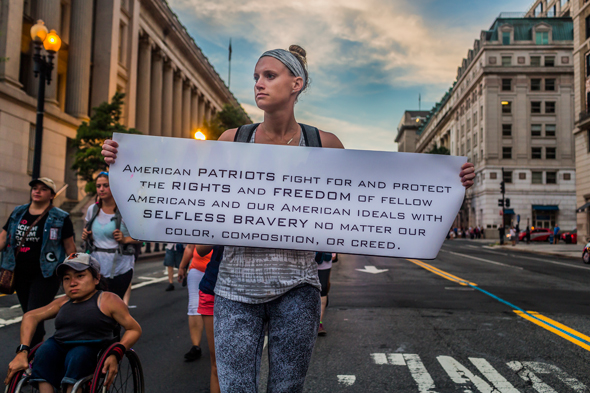
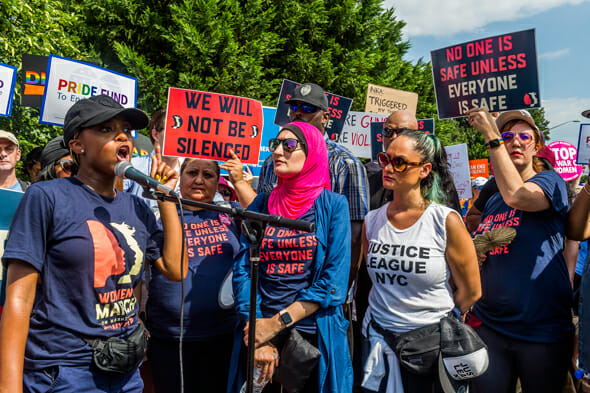
Women’s March co-founders Tamika Mallory (left), Linda Sarsour (center), Carmen Perez (second from right) and Bob Bland (holding sign at right) at Friday’s #NRA2DOJ march. (Michael Nigro)
Last Friday, near the end of an exhausting 18-mile march, approximately 350 people who had hoofed it from the National Rifle Association (NRA) headquarters in Fairfax, Va., to the Department of Justice (DOJ) building in Washington, D.C., through 96-degree heat and a ferocious storm, stopped in front of the Donald Trump White House and turned their backs in protest. Most began chanting “Shame. Shame. Shame.”
Within this defiant group were Linda Sarsour, Tamika Mallory, Carmen Perez and Bob Bland. They were the co-founders of January’s Women’s March on Washington — in which an estimated 5 million people on seven continents participated — and also the organizers of Friday’s march, hashtagged as #NRA2DOJ.
These four women, along with their supporting team of activists, have taken the momentum of the historic Women’s March on Washington and parlayed it from what was perceived by some as a one-off, one-day action into a transformative and powerful group.
Much in the way Standing Rock came to symbolize so much more than a fight against a pipeline, the Women’s March is poised to become the nexus of various social justice struggles, to manifest into the nerve center that reveals the interconnectedness of women’s rights, Black Lives Matter, LGBTQIA rights, health care rights, immigrant rights, religious rights and concerns about income inequality, too-big-to-fail finance, the militarization of police and the criminalizing of dissent, to name a few issues.
The Women’s March, in essence, is primed to become an actual movement.
The alt-right and those who align themselves with the Trump administration have continued to attack the movement and its co-founders personally. But these women are not backing down.
The group’s #NRA2DOJ action came about after the NRA ran a controversial ad that many viewed as an outright call to violence against the left and against citizens — particularly people of color — who are protesting or engaging in nonviolent acts of civil disobedience. (For a comprehensive background on the NRA2DOJ March, read Truthdig columnist Sonali Kolhatkar’s piece “The NRA Is Playing a Deadly Game in Labeling the Left as Violent.”)
During Friday’s 18-mile march, live streamed by Truthdig, the co-founders spoke about what the Women’s March movement is aiming to achieve. Here are excerpts:
Bob Bland:
What I would like [the Women’s March] to be is us, reweaving our culture together, to be women-led, more inclusive, more peaceful, more free, something that needs to be done intergenerationally. We are demonstrating that it’s possible and that it is also successful.
Carmen Perez:
We understand that there are so many issues that are important. So a lot of the work that we do is to gather justice around police accountability, system accountability, mass incarceration. … But we also care about immigrant rights. We also care about Muslim rights. We also care about LGBTQIA rights. And those folks are here. And it’s important to show up for one another.
Tamika Mallory:
With all the different issues that people are dealing with — the health care bill, the education front, reproductive rights — so many issues. And we know that people are going to be hitting the streets all summer. … To have people afraid to come out because they believe that they will be met with an armed militia is a problem. We wanted to make sure that we exposed it.
Approximately 20 pro-NRA advocates, all middle-age white males carrying side arms, paraded their counter-protest into the Women’s March before the speakers began.
Linda Sarsour (Re: the counter-protesters)
The reason why they are out here in opposition to us is that we are everything they don’t want. We are a multicultural, a pluralistic community. … It’s beautiful to see the diversity of the people we are able to draw. Because we are America. This [the women’s march] is actually what America looks like. We’re out here because we’re not going to let them silence us.

A typical sign at Friday’s 18-mile Women’s March. (Michael Nigro)
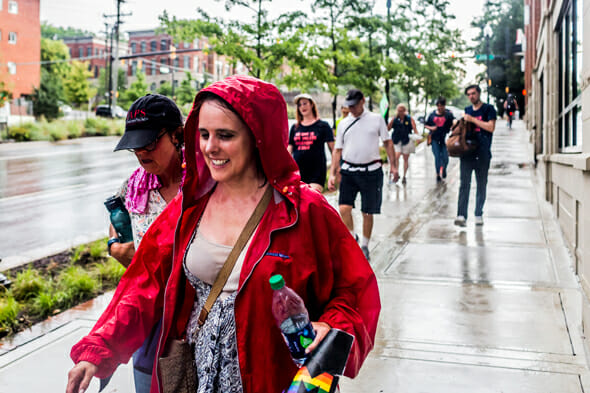
About mile eight, marchers go from dealing with 96-degree heat to a torrential downpour with wind gusts up to 50 mph. (Michael Nigro)
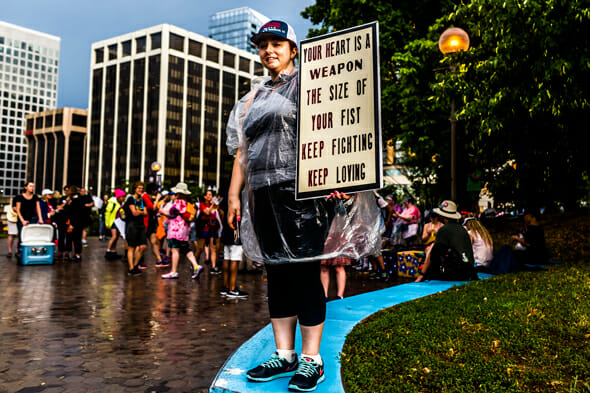
With three miles to go, the rain subsides and the group of about 350 takes a final break before entering Washington, D.C. (Michael Nigro)
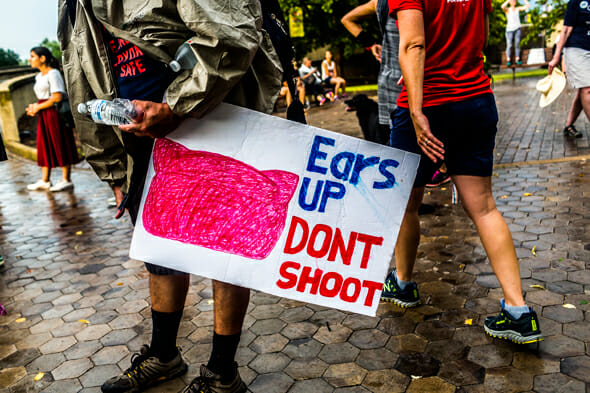
An homage to the “pussy hat,” a resistance fashion statement that had been omnipresent during the January Woman’s March. (Michael Nigro)
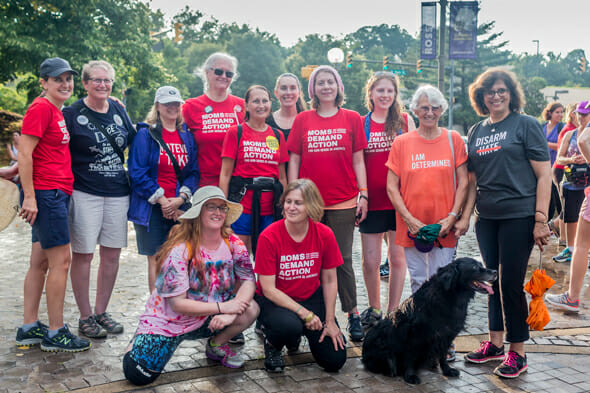
In solidarity with Friday’s march, this contingent from Mothers Demand Action is among other advocacy groups joining in. (Michael Nigro)
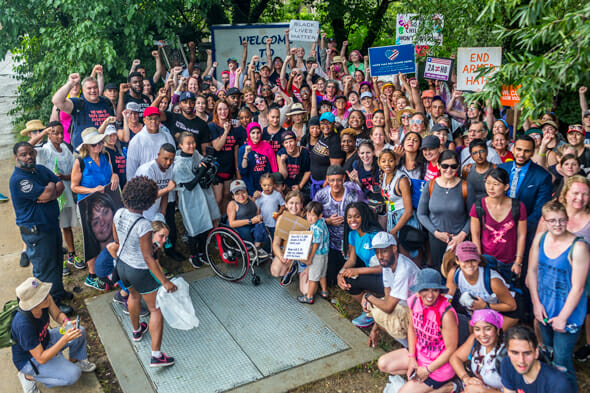
Marchers gather at the base of the Key Bridge, which connects Virginia and Washington, D.C. (Michael Nigro)
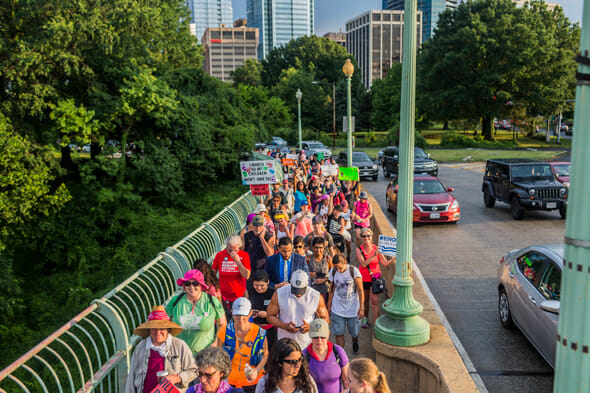
After nine hours of marching, the group crosses the Key Bridge. (Michael Nigro)
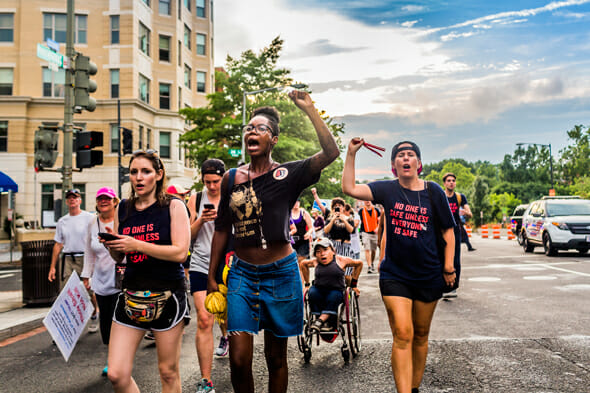
Upon entering D.C., the group takes M Street, the main thoroughfare of the Georgetown section of the district. (Michael Nigro)
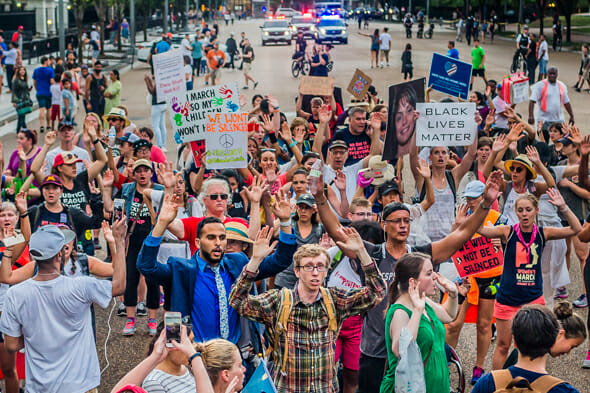
Marchers chant “Hands up, don’t shoot” in front of the White House. (Michael Nigro)
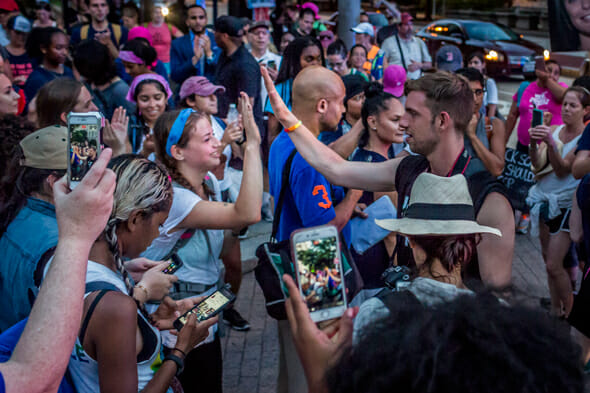
The end of Friday’s 18-mile #NRA2DOJ Women’s March. The next morning, the group returned to the DOJ for another rally and vigil. (Michael Nigro)
Independent journalism is under threat and overshadowed by heavily funded mainstream media.
You can help level the playing field. Become a member.
Your tax-deductible contribution keeps us digging beneath the headlines to give you thought-provoking, investigative reporting and analysis that unearths what's really happening- without compromise.
Give today to support our courageous, independent journalists.
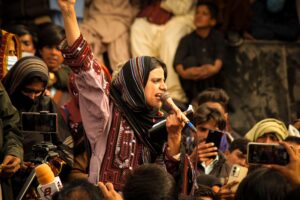
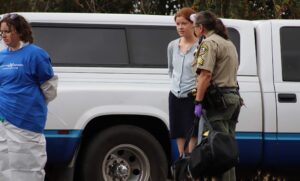

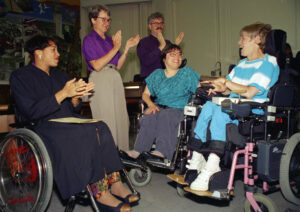
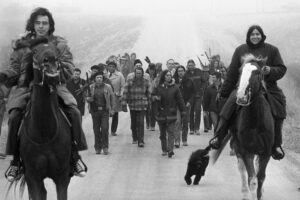
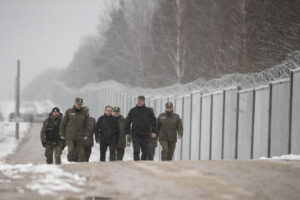
You need to be a supporter to comment.
There are currently no responses to this article.
Be the first to respond.